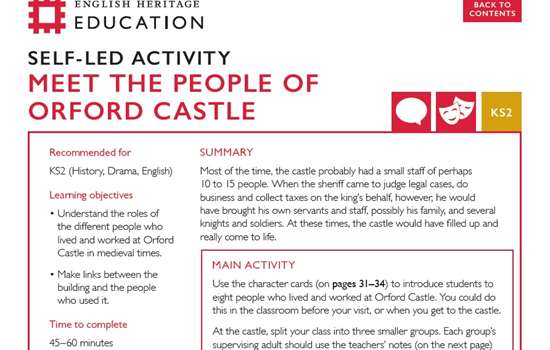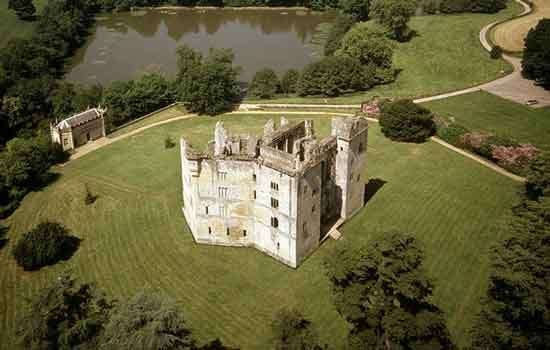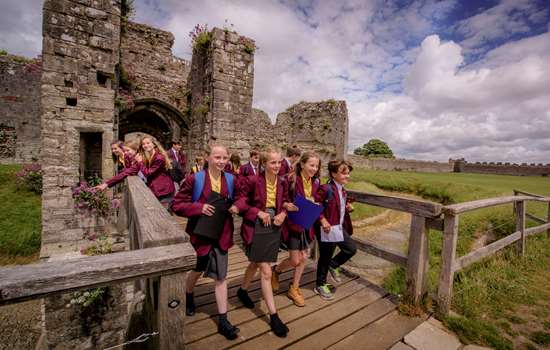Hints and Tips
- Build on solid foundations – Take time to establish a strong sense of period with your students to give them a good foundation on which to build understanding. This could include the feudal system, the relationship between Church and State, and learning about medieval health and medicine.
- Find the parallel – Many things from today have their origins in the Middle Ages such as parliament, some government departments like the exchequer, the legal system and grammar schools. Use these to stimulate interest and promote a sense of relevance.
- Explore language – The development of the English language can be an interesting entry point to study, looking at the mix of French, Latin and ‘Middle’ English, not to mention different dialects!
Suggested Activities
-

Show Down vs. Show Off (KS1-KS2) - Stokesay Castle Teachers' Kit
Use the information in this activity to decide whether a medieval castle was built for defence (show down) or luxury (show off).
-

Under Siege! (KS2-KS4+) - Pevensey Castle Teachers' Kit
Discover more about laying siege to a medieval castle in this activity by exploring the different weapons used during medieval sieges.
-

Meet the People of Orford Castle (KS2) - Orford Castle Teachers' Kit
Uncover the people behind the castle walls at Orford and consider the parts they played in castle life.
-

Medieval Feast Role Play (KS2-KS3) - Stokesay Castle Teachers' Kit
Take your place in a medieval great hall and act out your role at a great feast.
-

Why Build a Castle Here? (KS2-KS3) - Richmond Castle Teachers' Kit
Understand the geographical and strategic location of castles by using Richmond Castle as a case study.
-

Join the Honour (KS3) - Richmond Castle Teachers' Kit
Uncover the meanings behind heraldic shields and symbols in this activity as you design your own heraldic banner or coat of arms.
-

Control the Rebels (KS3) - Orford Castle Teachers' Kit
Consider the struggle between the Church and the Crown during Henry II's reign and find out how long you would last as a medieval king.
-

A Siege of Two Sides (KS3-KS4+) - Dover Castle Teachers' Kit
Compare and contrast English and French perspectives of a siege at Dover Castle in 1216, using contemporary sources.
History At Home Live! Castles
Watch History At Home Live! with Ben Shires and our expert Jeremy Ashbee to develop your understanding of castles.
Why were castles built? Who built them? How would you go about attacking a castle? Find out the answers to all these questions and more.
Get To Grips with the Period
Nearly half of all English Heritage sites date from the Middle Ages and their variety reflects the period’s developing character.
The castles first developed by the Normans were added to and continued to dominate the English landscape, reminding people of the authority of the nobility and the monarch. During this period, the Church dominated everyday life. In the 14th century one in every 15 Englishmen was clergy of some kind.
The Middle Ages was also a time of foreign and internal war. Carlisle Castle guarded the land border with Scotland, while Carisbrooke and Dartmouth castles defended England against invasions from the sea. Other medieval castles endured conflicts between monarchs and their barons, like Beeston, while some played a role in the dynastic Wars of the Roses in the 15th century like Warkworth Castle.
Read our Introduction to Medieval England-

Medieval: Religion
The Church was a pervasive force in people’s lives, with the power and influence of the Catholic Church – then the only Church in western Europe – reaching its zenith in England in the Middle Ages.
-

Medieval: Architecture
For more than a century after the Battle of Hastings, all substantial stone buildings in England were built in the Romanesque style, known in the British Isles as Norman. It was superseded from the later 12th century by a new style – the Gothic.
-

Medieval: Warfare
The Norman Conquest was achieved largely thanks to two instruments of war previously unknown in England: the mounted, armoured knight, and the castle.
Medieval Glossary
Expert Advice
We asked one of our curators for their thoughts on studying the Middle Ages:
Read More about Teaching HistoryThe Middle Ages are in some ways extremely familiar, and in others completely alien, even bizarre. Perhaps, most obviously, the physical creations of the Middle Ages still dominate England – we still use parish churches in their thousands, roads and bridges, towns and cities, and we see the majestic remains of medieval castles and monasteries. Many of the institutions at the heart of local and national government are recognisable from the Middle Ages
But it’s a long period, with many changes – a town under Henry II looked and felt very different to one under Richard III. It has fascinating contradictions too: how could the lovely music, poetry, illuminated manuscripts and stained glass of the 14th century share place with some of history's most infamous wars, famines and plagues?
Above all, the source material is both abundant and varied - we still have pictures, physical remains and documents in their hundreds and thousands to consult and analyse. All this adds up to a field of study richer than anything previously seen in England's history.
Jeremy Ashbee, Head Properties Curator
Video Resources
Discover more about the Middle Ages with our variety of videos.
Uncover what makes a medieval castle and how to take one. Meet a medieval noblewoman to find out about the lives of medieval nobles and start to distinguish different kinds of Benedictine monks using our mini guide. You can also learn more about how strange medieval ideas about medicine really were and which kinds of medieval remedies we still use today.
-
How to Take a Medieval Castle
-
Life as a Medieval Noblewoman
-
A Mini Guide to Medieval Monks
-
What was Medieval Medicine Like?




